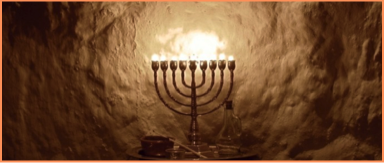Spiritual-Teaching.org
Friday 2 October 2015 – 19 Tishrei 5776
JOY IS A CENTRAL THEME IN THE FESTIVAL OF SUCCOT. THE TORAH stresses the idea that during this festival we should rejoice1. The Mishnah2 and Talmud describe great all-night celebrations in the Temple, brightly lit by massive oil lamps, in which huge crowds of men and women would gather and the leading Sages of the time would dance.
For the down-to-earth people of our generation, this might be rather a difficult idea to accommodate. To a great extent we base our lives on rational structures, even in our relationship with G-d. A favourite motto of Chabad is “the mind rules the heart”3. Time and again we see that euphoria is highly dangerous. So how are we to understand the concept of joy on Succot?
Joy is defined by the Sages as psychologically going beyond limitations. The fact of finite existence in a world of materialism and often of pain and even evil presents harsh limitations to the soul, the inwardness of the Jew. The soul seeks G-dliness and holiness - but these qualities are generally concealed.
The soul is trapped in this very limiting situation. In fact, through the ages the elite of humanity as a whole have been aware of this problem. Much of the world’s art concerns this existential trap and the effort to transcend it.
The Torah and its Commandments provide us with a path to transform the situation, not only for us, the Jewish people, but for the whole of humanity. G-d created the world with the potential to be changed into something higher: still physical, still “this world”, but now an expression of the holy, something intrinsically Divine.
On Rosh Hashanah we recognise G-d the Infinite as our King; the hundred blasts of the Shofar are represented by the word Sechach, the leafy covering of the Succah, which has the numerical value of 1004. The spiritual covering and atmosphere of the Succah is also seen as representing the cloud of fragrant incense which the High Priest offered in the Holy of Holies on Yom Kippur, when we came so close to G-d that all our sins, stains on the soul, were purified. On Succot we become aware of this contact with the Infinite as a permanent bond which will be part of our daily lives throughout the coming year5.
The Succah expresses the way the Divine encompasses every aspect of our being; the Four Plants – Palm Branch, Citron and so on - express the four letters of the Divine Name which are revealed within us. We are therefore surrounded by G-dliness, and filled with G-dliness; we no longer feel that we are struggling to overcome a barrier which hides G-d from us. This explains the joy: we have broken through the barrier, not by destroying something or forgetting it (as in mindless euphoria) but by transforming it from something potentially negative to something totally positive.
Finally at the close of Succot, on Simchat Torah, the Rejoicing of the Law (5-6 October), we bond to G-d and His Torah in a way which links our Essence with the Divine Essence. We rejoice with the Torah, and G-d transforms the barriers of existence, opening them for us, pouring blessings to us and to all Israel for a year of peace, health and joy...
1. Lev. 23:40, Deut.16:15. 2. Mishnah Succah 5:1-4. 3. Tanya I ch.17. 4. Samech = 60, and Khof = 20. Thus Samech Khof Khof = 100. 5. See the Lubavitcher Rebbe’s discourse, 13 Tishrei 5736, sec.3.
Torah teachings are holy – please treat any print-out of this page with care.
Succot Festival - Kinds of Joy By Naftali Loewenthal

"Do not exalt any path above God. There are many paths that lead to God.
So people are capable of finding and following the ways that suit them,
provided they do not stand still." Reb Zalman Schachter-Shalomi